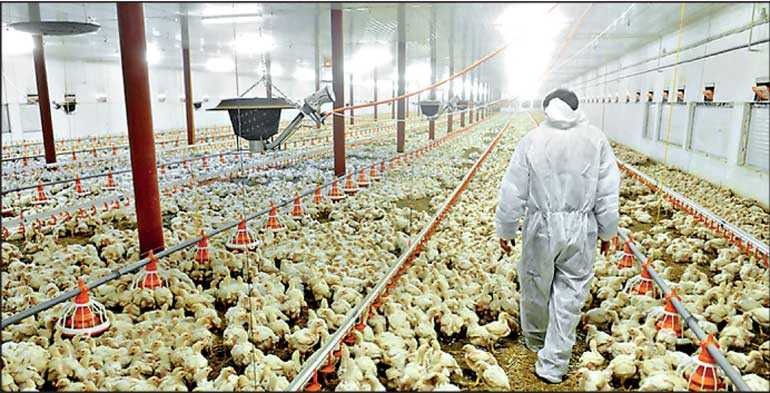Friday Dec 05, 2025
Friday Dec 05, 2025
Saturday, 20 June 2020 00:13 - - {{hitsCtrl.values.hits}}

Despite being hit by import restrictions on maize, Sri Lanka’s poultry producers are planning to capture markets vacated by COVID-19-hit foreign companies to export to the Middle East and elsewhere spurred by Government promises to assist in finding new markets.
Negotiations are underway with several Middle East countries including Oman and Kuwait to secure export orders said All Island Poultry Association (AIPA) Chairman Ajith Gunasekara. “We are preparing to export; we have built up our industry to international standards and hope to secure several export orders for frozen chicken, eggs and value-added products,” Gunasekara told the Daily FT.
He pointed out Sri Lanka could take advantage of space created by the COVID-19 pandemic, which has resulted in major international players such as Brazil being unable to fulfil the demand in the Middle East. “We are planning to aim for some of those markets, with good quality control and assistance from the Government, this is possible” Gunasekara opined.
He said that the Government was keen to assist poultry exports that will bring in much-needed foreign currency at a time traditional forex earners have stalled. Import restrictions enacted by the Government to help local farmers had restricted the import of corn, which coupled with the COVID-19 outbreak had strangled the industry of much-needed feed, Gunasekara explained, pointing out that AIPA had pledged to the Government that they would buy as much corn as is available at a reasonable fixed price from local farmers. “We are also discussing about growing more corn locally and how to buy directly from the famers,” he said.
Gunasekara said that at a recent meeting held at the Presidential Secretariat the Government agreed to relax restrictions on corn imports in the short term to assist the industry to source the shortfall it faced. The Government has also agreed to look into issuing a fixed price for corn and purchasing corn directly from the famers, he added.
However, the AIPA Chairman said that due to the low production rate at present and the scarcity of chicken feed, the price of chicken and eggs may increase in the short term. “However, we are expecting a rise in sales at the end of August, with the country opening up to tourism and local consumption starting to recover,” he said.
“If we can secure significant orders, we can employ more people and that is important as due to COVID-19 there are many unemployed people in the country,” he said. The industry needs a boost as the last three months have had a major impact on the poultry famers domestically.
“We suffered large losses during the last three months, nearly seven million one day old chicks had to be destroyed due to difficulty in finding adequate amounts of chicken feed,” Gunasekara stated. When the COVID-19 related curfew was enforced in March the poultry industry had been gearing up since January for what was expected to be a time when demand would pick up due to increased tourism and the April New Year, which was expected to create 30% increase in sales.
However, faced with a curfew and unable to supply key super markets the industry had suffered. Transport of poultry feed was not listed as an essential service compounding the problem. Nevertheless, Gunasekara stated that the Government established an office to coordinate matters related to their industry and had asked the producers to deliver chicken and eggs to consumers who were under curfew.
“We decided to heed the Government’s call. We had to sell at a loss but it was better than the chicken going to waste in freezers, we got our members to use trucks and three-wheelers to deliver our produce to as many areas as possible,” he said. The losses faced by the industry will take a long time to recover, he added.
A key issue the industry is facing is the scarcity of chicken feed. “About 50% of the recommended chicken feed is corn, and the local industry needs close to 600,000 MT annually to produce the 1.2 million MTs of chicken feed needed per year to cater to local consumption,” he explained.
Nearly half of the corn needed can be sourced locally but price controls are needed to prevent third party vendors from charging exorbitant prices for it, he opined. (AF)